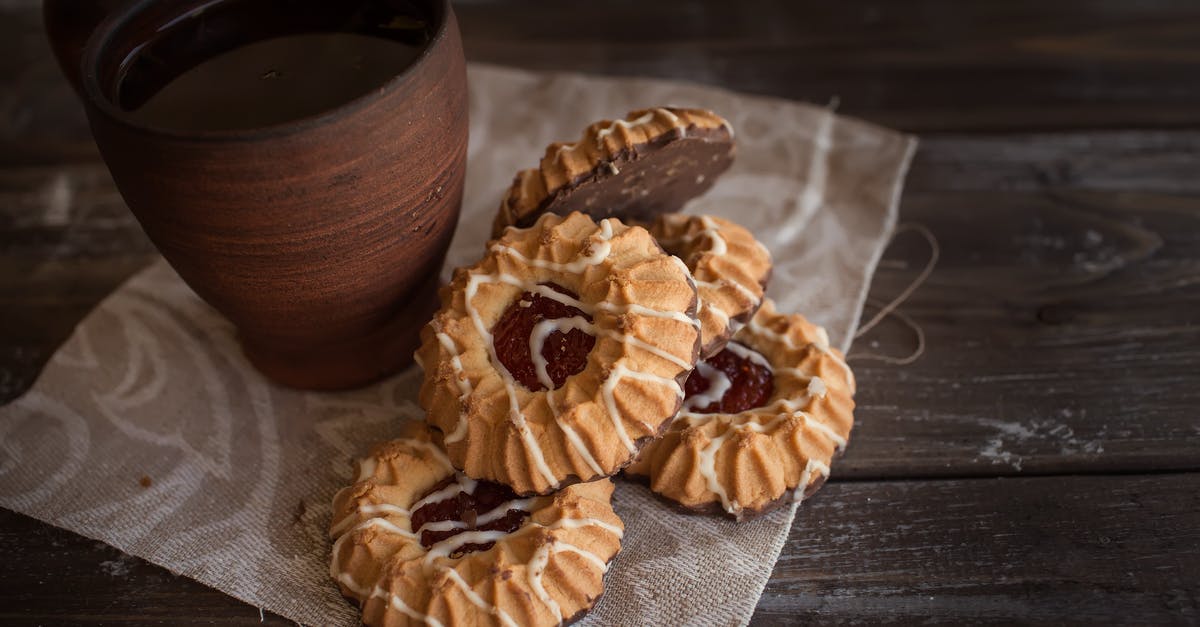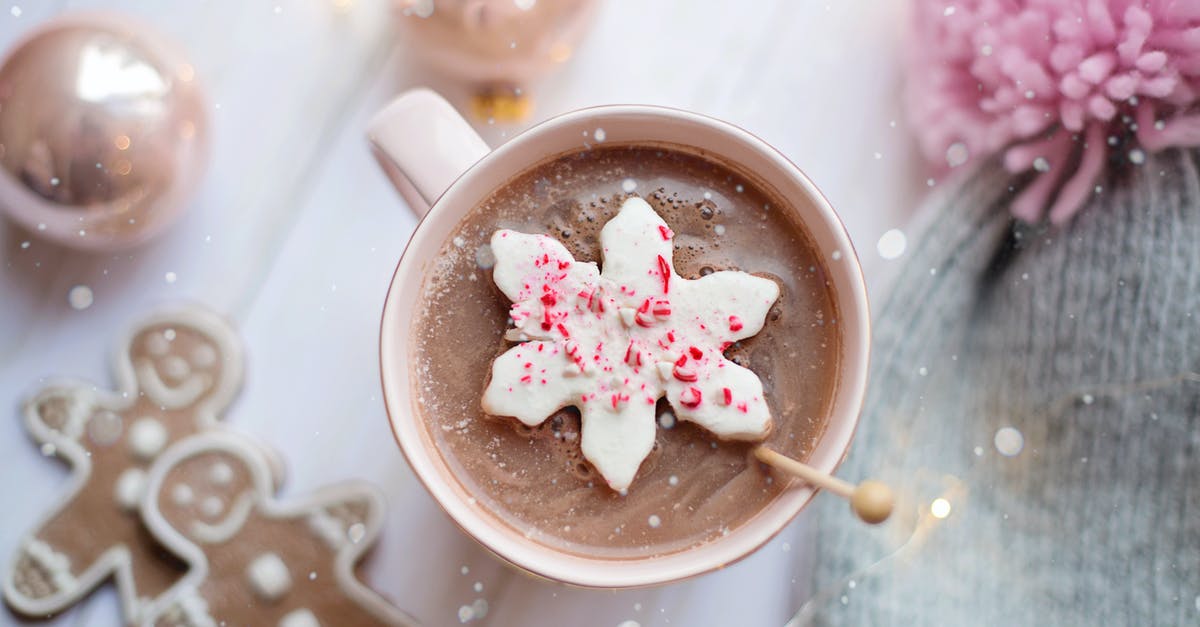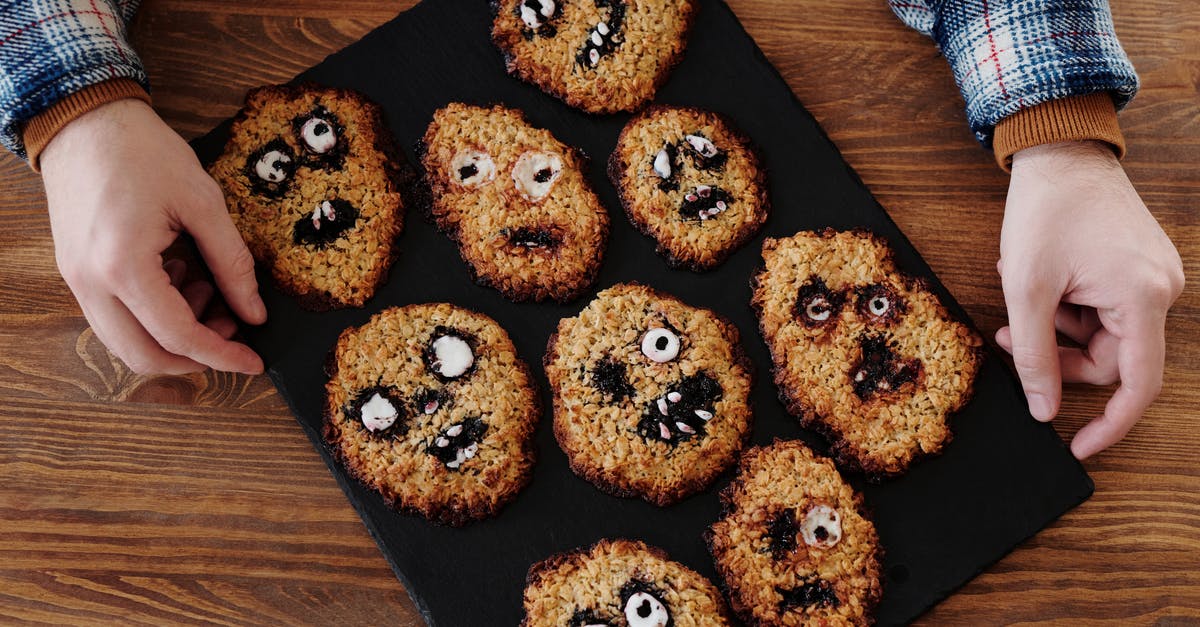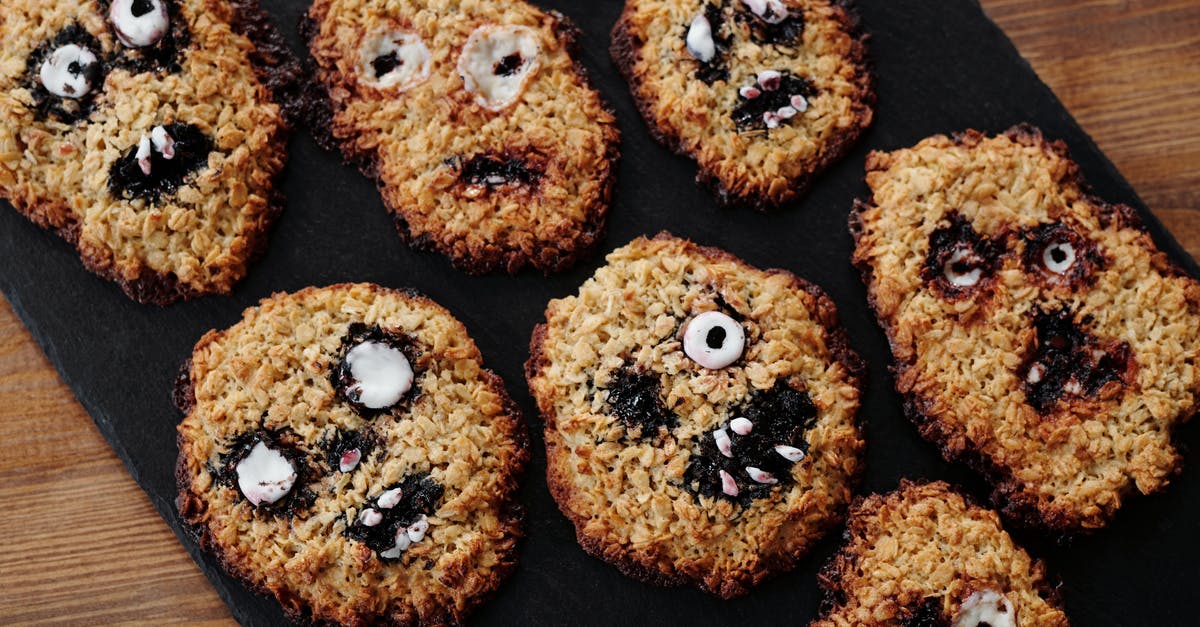Baking Dark Chocolate in Cookies Without Burning Them

I just tried this amazing chocolate chip cookie recipe. The recipe calls for adding hand-smashed dark chocolate chunks into the batter and mixing.
It seems like the chocolate doesn't break much. I used the good stuff, 90% cocoa products (very dark!). What I'm worried about now is that the chocolate will burn instead of melting into oozy goodness.
The recipe calls for 350 degrees for baking. I read somewhere on Seasoned Advice that dark chocolate can burn at temperatures as low as 60 degrees celcius (140 degrees Fahrenheit).
So how do I reconcile this? Can I actually bake this somehow without burning it? If so, at what temperature?
(I'm also curious to know why the recipe calls for baking soda and baking powder, as one is a subset of the other.)
Best Answer
Dark chocolate is actually more heat resistant than other kinds. Milk chocolate can scorch at 115° F / 46° C or higher; semi-sweet can have problems at 125° F / 52° C or so. It's mainly the dark chocolate that can withstand temperatures as high as 140° F / 60° C.
I think there are two misconceptions to clear up here, those being:
Baking at 350° F does not mean you are raising the internal temperature to anywhere even close to 350° F. Even yeast breads are not baked to an internal temperature higher than around 200° F, and it's much lower for soft breads and especially cookies. It's hard to find much data on the recommended internal temperature for cookies, but I'd estimate it to be around 160° F simply for food safety reasons.
Just because a food can burn above a certain temperature, does not mean that it will happen immediately. Just as heating oil slightly above its smoke point does not immediately result in flames and rancid taste, heating chocolate above the aforementioned temperatures will not immediately cause it to scorch. What it means is that chocolate can be sustained in a melted state indefinitely at lower temperatures, but raising the temperature further will cause it to eventually scorch. The higher the temperature, the less time it will take.
These "scorching" temperatures are mainly cautions against direct stovetop or microwave heating; with these methods it is easy to get the temperature very high, very fast. When you bake cookies, you are applying very slow, gradual heat; if the temperature of the chips even gets as high as 140° F, it won't stay that high for very long. It's not enough to burn, and that is why even milk chocolate or white chocolate chips tend to do fine in cookies.
So just bake them, and don't worry. The cookies themselves will probably scorch before the chocolate does.
P.S. As SAJ14SAJ writes in the comments, this assumes that you bake the cookies on some kind of insulating material like parchment or a baking mat. There is a risk of burning if you bake them directly on a metal tray and the chocolate comes into direct contact with it, as it will then heat up very quickly to approximately the same temperature as the tray. So don't do that - if you use a metal tray or cookie sheet, make sure there's something between that and your cookies. They bake from the ambient heat in the oven, and don't really need direct heat from the tray.
Pictures about "Baking Dark Chocolate in Cookies Without Burning Them"



Quick Answer about "Baking Dark Chocolate in Cookies Without Burning Them"
While all this is true, for the center and body of the cookie, scorching chocolate in direct contact with the tray is a real risk. For this reason, this type of cookie is best baked using parchment or a silicone mat on the tray, which mitigates the heat conduction from the metal tray, and lessens the risk of scorching.Does parchment paper keep cookies from burning?
One option is to use parchment paper, also called baking paper, which is both moisture and heat resistant and used by plenty of bakers to help you protect the bottoms of the cookies (this also helps with clean up).Why do my cookies keep burning?
When you cook on darker colored pans, you get cookies that are too brown on the bottom. The dark pans absorb heat, and are more likely to result in burned baked goods. Always place your baking sheet in an oven rack position that's in the middle of the oven. This promotes optimal circulation of heat.How do you keep the edges of cookies from burning?
Putting raw dough on cookie sheets still warm from the oven can cause them to begin spreading, leading to burnt edges. Always allow baking sheets to cool completely before adding more batches. To expedite cooling, rinse warm\u2014but not hot\u2014sheet under cold tap water.Why is the chocolate in my cookies not melting?
Cooking chocolate tends to have less cocoa butter than eating chocolate, which raises the cooking chocolate's melting temperature and makes it more difficult to melt. However, the chocolate will still melt in the oven. The chocolate chips in your cookies are simply held in shape by the surrounding cookie mixture.The Best Chewy Chocolate Chip Cookies
Sources: Stack Exchange - This article follows the attribution requirements of Stack Exchange and is licensed under CC BY-SA 3.0.
Images: Pixabay, Jill Wellington, Daisy Anderson, Daisy Anderson
